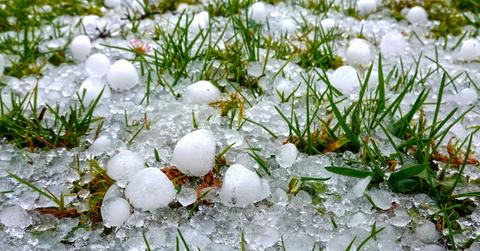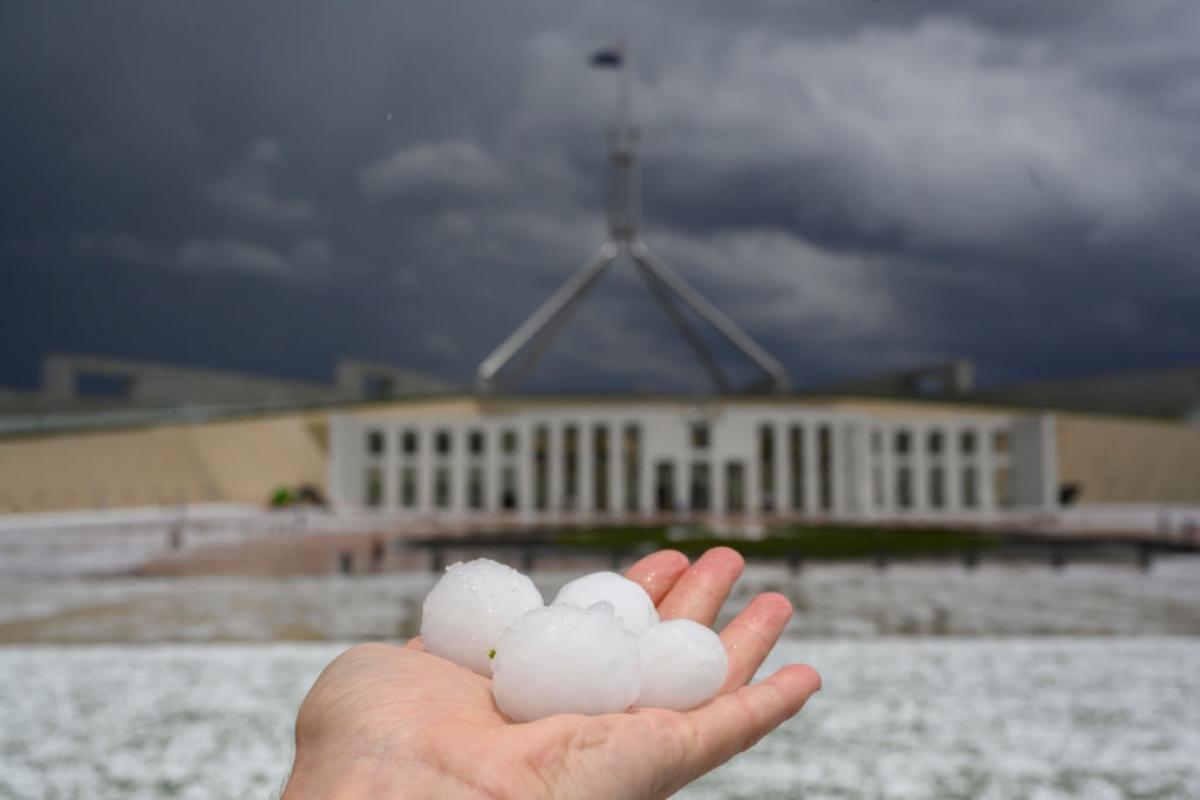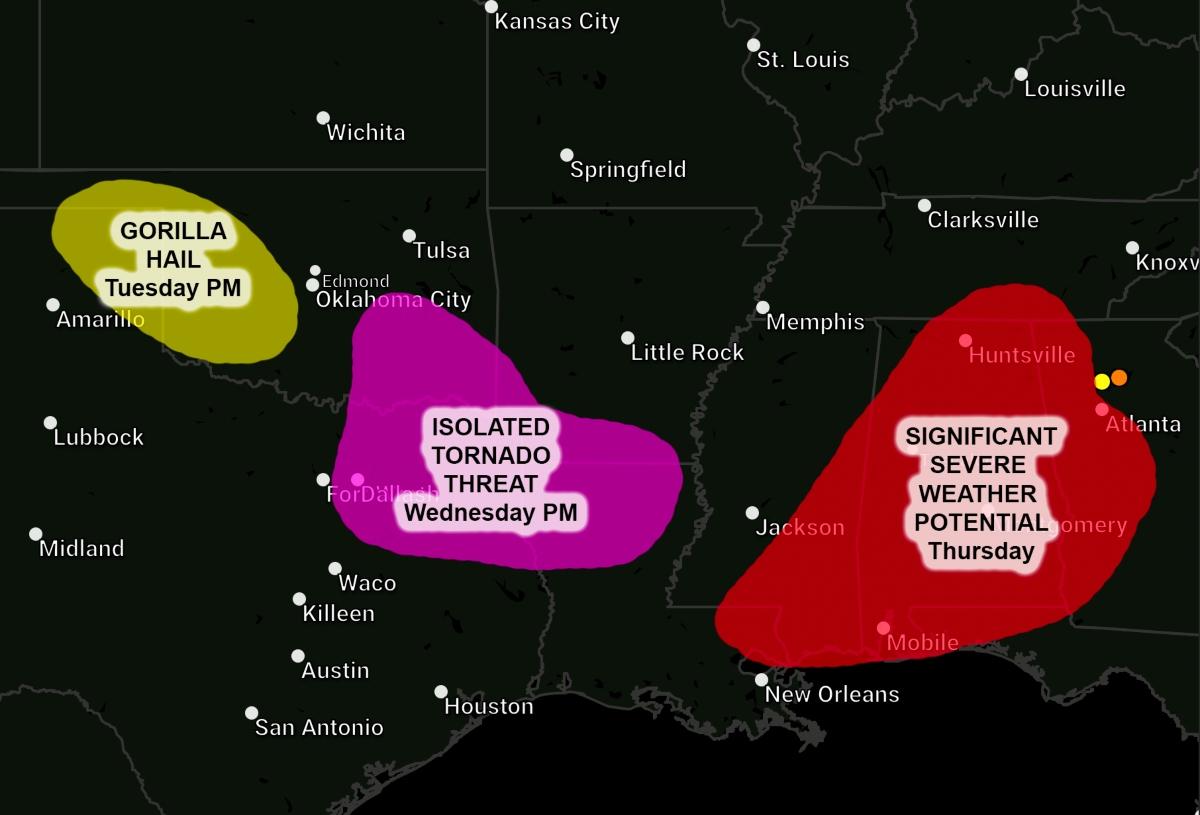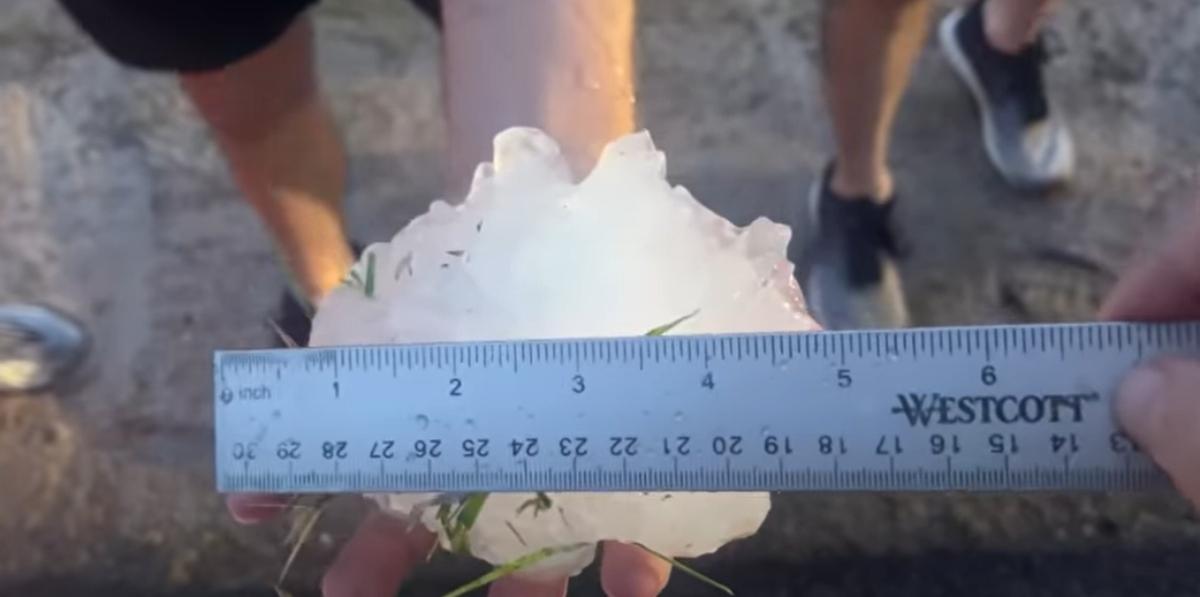When Hail Goes Wild: Everything You Need to Know About Gorilla Hail Storms
If gorilla hail is passing through your city, you may want to stay indoors.
Updated March 14 2024, 11:23 a.m. ET

Among all of the extreme weather events that can happen, hail is one that may sound like it's on the mild end of the spectrum; however, it has the potential for serious danger, especially when it's in the form of gorilla hail.
And if gorilla hail doesn't sound familiar, that's probably because it's not all that common. One storm chaser and meteorologist coined the term "gorilla hail" and the name stuck.
Hail stones are often described in terms of their size relative to objects such as a pea, a golf ball, or a nickel. Gorilla hail is much bigger, believe it or not. Read on to learn about how destructive this bizarre form of hail can be.
What is gorilla hail?
Despite the name, gorilla hail doesn't mean hail stones the size of an actual gorilla. But the term does indicate a larger-than-usual diameter for a hail stone. Reed Timmer, a meteorologist and storm chaser with a YouTube channel documenting his extreme-weather adventures, came up with the term "gorilla hail".
Gorilla hail refers to a shower of large hailstones measuring several inches in diameter, often described as the size of a baseball, softball, or grapefruit.
Gorilla hail has impacted states including Texas, Missouri, and Kansas.
According to the National Environmental Satellite, Data, and Information Service (NESDIS), gorilla hail has appeared in parts of Texas on multiple occasions. For instance, in Llano, Texas in 2021, a number of vehicles got dents and cracked windshields thanks to gorilla hail. Along with the huge size of the hailstones, the hail even formed accumulations of up to 3 inches on the ground at the time.
FOX Weather reported on another gorilla hailstorm in Texas, where resident Christine Cashen exclaimed on camera, "Holy hail!" She followed that up with "That was a baseball!" when observing the size of one of the hailstones hitting her backyard pool. Someone eventually grabbed one of the hailstones so people could see what it looked like compared to their hand. These gorilla hailstones appeared during threats of severe thunderstorms in the area.
And in March 2024, gorilla hail was in the news again as it pelted down across Kansas and Missouri, as reported by local news outlet KY3. It prompted the National Weather Service to warn people in the impacted areas to head inside and away from any windows. And as AP News reported, meteorologists in Kansas and Missouri put out tornado warnings on Wednesday, March 13.
How does hail form?

According to the National Severe Storms Laboratory, hail forms during thunderstorms. Raindrops are carried upward by storm updrafts into colder parts of the atmosphere, where they freeze. The stones grow in size when more water drops land on the surface and freeze.
The largest recorded hailstone was recorded in South Dakota, measuring at an 8-inch diameter and weighing 1 pound, 15 ounces.
Hail can vary in texture as well, with some hailstones very smooth and others spikey. According to WFAA News, the appearance of hail depends on factors like the conditions during the storm while hailstones form. Turbulent conditions can lead to a spikier appearance.
How clear a hailstone looks can vary also. If the water freezes instantly on a hailstone, the stone can look hazy or opaque due to air bubbles trapped underneath. Slower freezing leads to a clearer, more transparent look because those air bubbles escape.
Who is Reed Timmer?
Reed Timmer is the weather enthusiast responsible for giving gorilla hail its name. According to his YouTube channel, Timmer chases storms, putting himself in the path of some of the most severe possible storms. But he's not just some random storm chaser; he is a meteorologist who launches "trackable meteorological sensors" into storms like tornadoes and hurricanes.
Timmer and his team track all types of extreme weather and show the extent of damage to property (for example, windshields badly dented by gorilla hail).
This article, originally published on June 14, 2023, has been updated.

